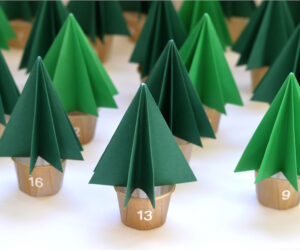Maintaining a swimming pool is hard work, and if you don’t know where to begin, it can be daunting. However, the systematic approach set out in this guide will make it manageable and rewarding.
We’re going to split the tasks you need to complete into daily, monthly, and seasonal tasks. Then we’ll give you some additional tips to make it as easy as possible to maintain your pool. Have a chat with reliable pool service agencies for extra help.

1. Daily Tasks
A. Skimming the Surface
Leaves, insects, and other stuff can quickly accumulate on the surface of your pool. Use a long-handled pool net to remove these things daily. Doing this regularly will prevent debris from sinking to the bottom and make your weekly and monthly cleaning tasks easier.
B. Checking the Water Level
The water level in your pool should be at the midpoint of the pool skimmer. Water can evaporate or be lost through splashing, so it’s important to monitor and maintain the correct level. If the water is too low, the pump could run dry and get damaged; if it’s too high, the skimmer door may not work efficiently.
2. Weekly Tasks
A. Vacuuming the Pool
Vacuuming your pool once a week helps to remove dirt and debris from the pool floor. Automatic pool cleaners are convenient and save time, but manual vacuuming may be necessary if there are any stubborn spots. Give the walls and floor of the pool a good brush with a long-handled brush before vacuuming to dislodge any algae or debris.
B. Brushing the Walls and Tile
Use a pool brush to scrub the walls, steps, and floors of your pool. Pay special attention to areas with poor circulation, such as stairs and corners. Brush the tile line to prevent algae buildup and calcium deposits.
C. Testing Water Chemistry
Maintaining balanced water chemistry is critical for a safe swimming environment. Test your pool water weekly for pH, alkalinity, and chlorine levels using a reliable test kit. The ideal ranges are:
- pH: 7.4 – 7.6
- Alkalinity: 80 – 120 ppm
- Chlorine: 1 – 3 ppm
Adjust the chemicals as needed to keep these levels in check.
3. Monthly Tasks
A. Shocking the Pool
Shocking, or super-chlorinating, your pool water helps to remove contaminants and keep it clear. This process involves adding a large dose of chlorine to the pool in order to kill any bacteria or algae in the water. This is something you would generally do monthly but you may need to do it more often if the pool is heavily used or after a rainstorm.
B. Cleaning the Filter
The filter is an essential component of your pool’s circulation system. There are three types of pool filters: sand, cartridge, and diatomaceous earth.
You will need to clean or backwash your filter monthly to ensure it operates efficiently. For cartridge filters, remove and hose down the cartridges. For sand and diatomaceous earth filters, be sure to check the manufacturer’s instructions for backwashing.
C. Inspecting the Pump and Equipment
Check the pump and other equipment for any signs of wear or damage. Listen for unusual noises, and inspect the pump for leaks. Ensure all connections are tight and clean out any debris from the pump basket.
4. Seasonal Tasks
A. Opening the Pool
When you first open your pool for summer, follow these steps:
- Remove and clean the pool cover.
- Reconnect all equipment and inspect for any damages.
- Fill the pool to the appropriate level.
- Test and balance the water chemistry.
- Run the pump and filter for 24 hours to circulate the water and mix the chemicals.
B. Closing the Pool
Similarly, there are steps to be followed to ensure the proper closing of your pool for the off-season. This is crucial to prevent damage during the winter months:
- Balance the water chemistry.
- Lower the water level to below the skimmer.
- Drain and store the pump, filter, heater, and other equipment as per the manufacturer’s instructions.
- Add winterizing chemicals.
- Cover the pool securely to keep out debris.
5. Additional Tips
A. Maintaining Good Circulation
Good water circulation helps to keep your pool clean and prevents the growth of algae. Run your pool pump daily for at least 8-12 hours, depending on the size of your pool and how often it gets used.
B. Monitoring for Algae
Algae can quickly turn a sparkling pool green, so you need to monitor it and catch it early. Regular brushing, vacuuming, and maintaining proper chemical levels can help prevent algae growth. If you notice algae, shock the pool and use an algaecide.
C. Regular Inspections
Regularly inspect your pool and equipment for any signs of wear and tear. Look for cracks, leaks, or other damage and address these issues promptly to avoid costly repairs.
D. Safety First
Always prioritize safety. Ensure that the pool area is secure, especially if you have children. Keep safety equipment, like life rings and poles, nearby and easily accessible.
Keeping your pool in great condition requires a consistent and thorough maintenance routine. By following this ultimate pool maintenance checklist, you can ensure your pool remains a clean, safe, and enjoyable oasis for you and your family. Pay attention to your pool, look for signs of trouble and maintain it on a regular basis.



